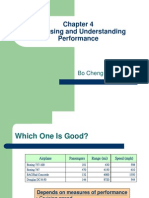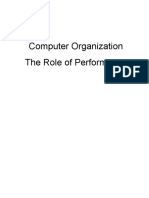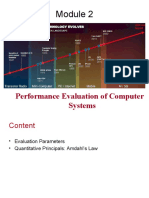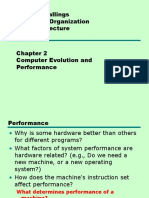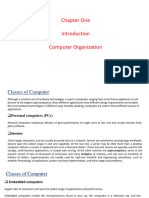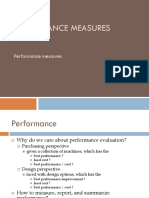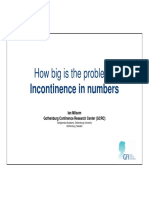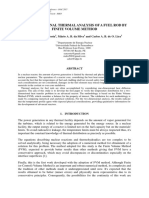0% found this document useful (0 votes)
11 views22 pagesLec10 Performance
The lecture discusses performance metrics in computer organization, focusing on purchasing and design perspectives, emphasizing the importance of response time and throughput. It outlines key factors affecting performance, including CPU execution time, clock cycles, and instruction count, and introduces benchmarks like SPEC for measuring performance. The document also highlights the significance of reproducibility in experiments and mentions power consumption as a critical metric in embedded systems.
Uploaded by
owlflowertankCopyright
© © All Rights Reserved
We take content rights seriously. If you suspect this is your content, claim it here.
Available Formats
Download as PDF, TXT or read online on Scribd
0% found this document useful (0 votes)
11 views22 pagesLec10 Performance
The lecture discusses performance metrics in computer organization, focusing on purchasing and design perspectives, emphasizing the importance of response time and throughput. It outlines key factors affecting performance, including CPU execution time, clock cycles, and instruction count, and introduces benchmarks like SPEC for measuring performance. The document also highlights the significance of reproducibility in experiments and mentions power consumption as a critical metric in embedded systems.
Uploaded by
owlflowertankCopyright
© © All Rights Reserved
We take content rights seriously. If you suspect this is your content, claim it here.
Available Formats
Download as PDF, TXT or read online on Scribd
/ 22



